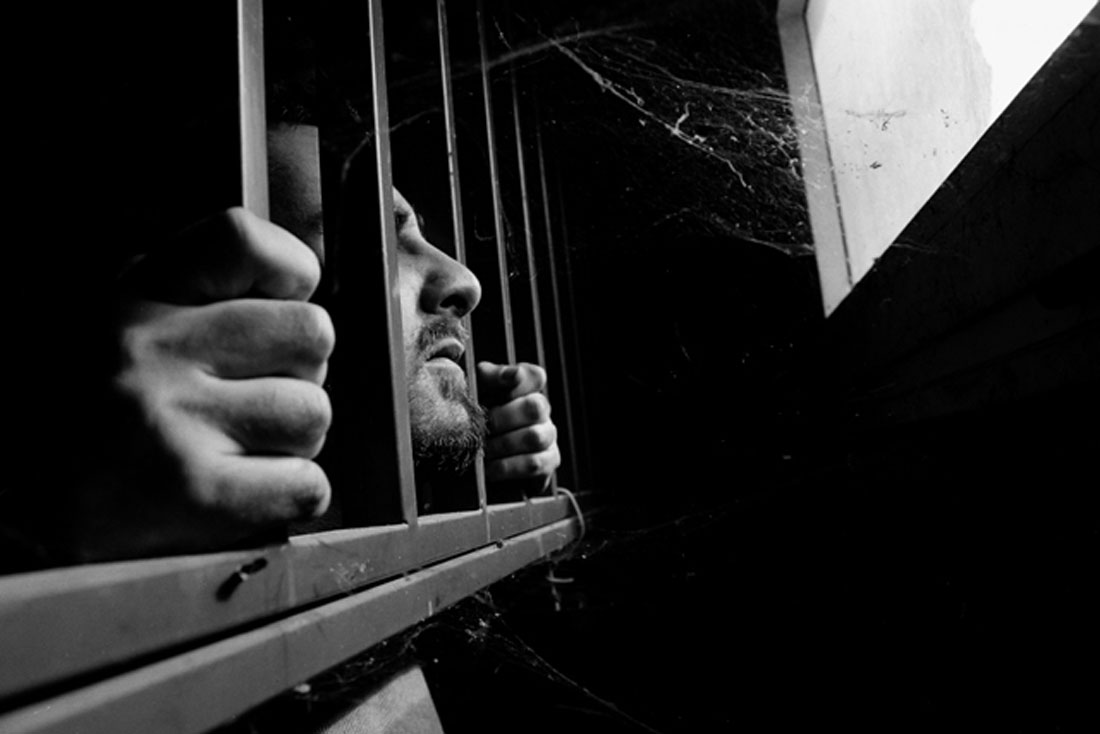By Dani Anguiano
Sonja Radtke, 30, a recovering heroin addict, says experiencing heroin withdrawal feels a lot like going through hell, but it is much worse in jail where treatment is limited.
“Like, I throw up blood and have seizures when I get sick, but [jail staff] really don’t do anything,” Radtke said of her withdrawal experience while incarcerated in an Illinois jail.
Similarly, Chenel Jones said the pain that she experienced while withdrawing from heroin was so intense that she became delusional.
“Because it’s hell,” Jones said. “I just asked God to take my life. I had gave up – it’s so painful and it’s so sickening.”
The jails where Radtke and Jones experienced withdrawal are among the more than 5,000 jails and prisons across the United States, many of which lack the resources to provide treatment for heroin withdrawal and detoxification. The National Commission on Correctional Health Care says methadone-based treatment is highly effective for opiate addiction, but only a handful of facilities have a methadone program, such as Rikers Island’s Key Extended Entry Program. Heroin use has reportedly skyrocketed across the country in recent years leaving more and more facilities ill-equipped to offer treatment.
Neither Radtke nor Jones received methadone treatment while incarcerated.
“It’s Tylenol and Tums for about a week and Pepto if it’s real bad,” Radtke said.
According to Dr. Kevin Fiscella, with the American Society of Addiction Medicine, the form of treatment Radtke received isn’t really treatment at all.
“If symptom treatment is just giving someone a Tylenol every 12 hours, are you really treating them? Probably not,” said Fiscella, who is also with the National Commission on Correctional Health Care
There are three primary medications used to treat withdrawal and detoxification from opioids: methadone, Suboxone and Clonidine.
“Probably more than half [of correctional facilities] use Clonidine, and other programs just give symptomatic treatment,” Fiscella said.
Jones said she received treatment for withdrawal symptoms in Cook County Jail for a short time. According to Jones, heroin withdrawal in the jail has reached “epidemic” proportions and as a result the jail has started offering more treatment.
“It’s hell. I just asked God to take my life. I had gave up – it’s so painful and it’s so sickening.”
– Chenel Jones, former inmate at Cook County Jail
“A couple people had died, so they give you a shot now when you come because withdrawal is so bad and it’s like overwhelming in the jails,” Jones said, adding that treatment is key to ending addiction and keeping addicts out of jail. “But after three days they don’t give you anything.”
Cook County Jail did not offer comment on the matter.
Methadone is widely hailed as an effective method for treating heroin withdrawal and ending addiction over time. Rikers Island’s Key Extended Entry Program, or KEEP, was the first methadone treatment program in a correctional facility. The program has been successful in transferring inmates to outside treatment upon release and ultimately reducing recidivism rates among that population. A handful of similar programs have developed across the country.
Fiscella said at a minimum correctional facilities should have some sort of intake system to monitor the health risks of withdrawal and because symptoms of withdrawal can mask symptoms of other serious conditions.
“I think a best practice involves some sort of initial triage, some means of identifying everyone who comes in upon entry, some sort of screening that will quickly identify the people at risk, and the people that are at risk need to be assessed by medical and nursing staff,” Fiscella said.
He added that correctional facilities throughout the United States lack resources and are consistently underfunded, which hinders the implementation of new systems of treatment.
Fiscella said: ”There are more people with mental illness in jails than psychiatric hospitals and jails are flooded with people who have mental health issues, substance abuse issues. Jails and correctional facilities are really challenged to figure out how to meet these needs.”
According to Kathleen Kane-Willis, president of the Illinois Consortium on Drug Policy at Roosevelt University, jails are unable to provide treatment because many drug users don’t belong there in the first place.
“I think the staff in jails are really trying to provide the best care and they’re overwhelmed,” Kane-Willis said. “They’re not supposed to be treatment centers because they’re not supposed to be flooded with people with psychiatric and substance abuse disorders.”
Heroin abuse is reportedly on the rise in Illinois and across the country. According to a report from the Centers for Disease Control and Prevention, from 2009-2012 there was a 74 percent increase in the number of heroin users.
Fiscella said that treatment is key in correctional facilities, but it is also needed before people get to that point.
“It’s really important that we need to break this costly cycle of addiction because otherwise we have this epidemic of huge numbers,” Fiscella said. “Lots of people dying, and lots of people coming into the criminal justice system and we need treatment to interrupt this costly cycle, otherwise everyone will be hurt.”

